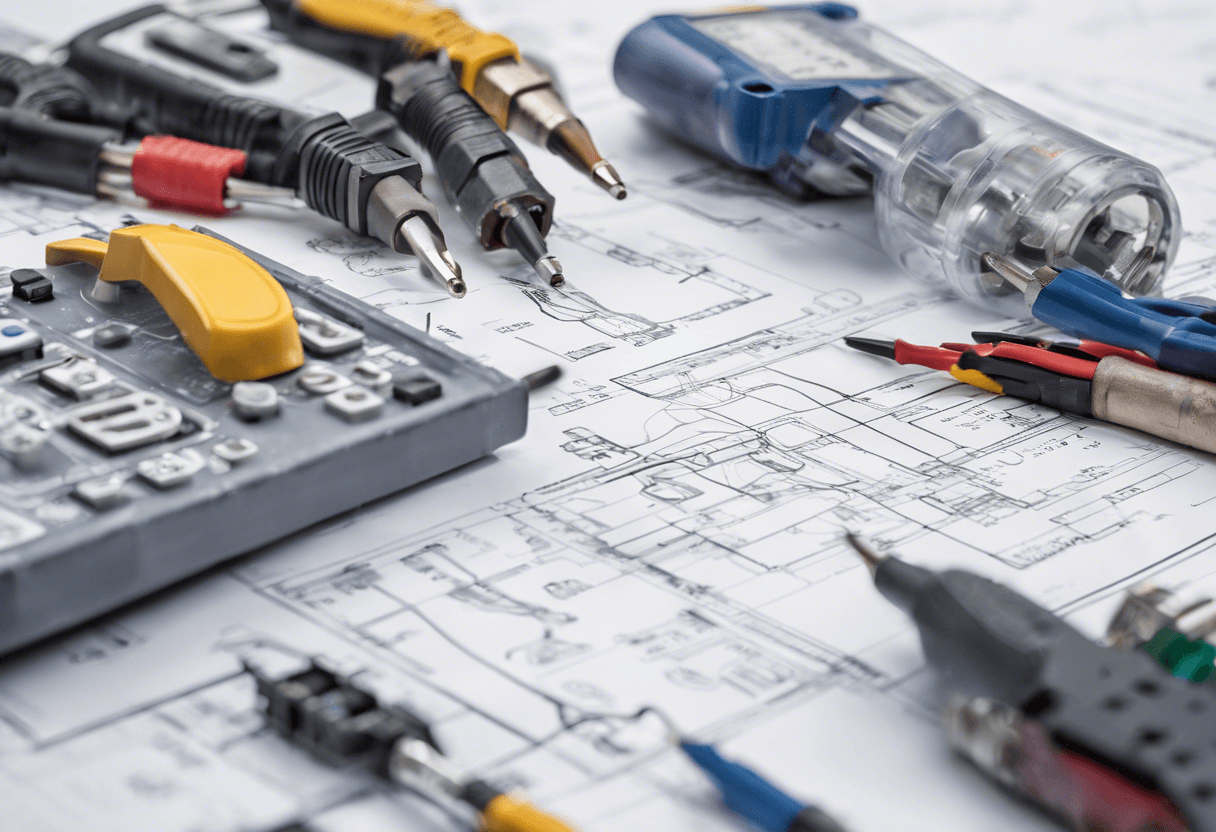How to plan and execute large electrical projects



How to Plan and Execute Large Electrical Projects
Large electrical projects are like behemoths - they require meticulous planning, precision, and execution to ensure their success. One small misstep or oversight can lead to costly delays, safety risks, and even financial losses. It's like trying to contain a thousand voltages in a single circuit - it requires finesse, expertise, and a sprinkle of caution.
Understanding the Project Scope and Requirements
The first step in planning a large electrical project is to understand the project scope and requirments. This involves gathering information about the project's objectives, timelines, and resource allocation. It's like trying to decipher a complex electrical circuit - you need to identify the key components, their relationships, and how they interact with each other. A thorough analysis of the project's specifications, technical requirements, and environmental factors is crucial in this stage.
Conducting a site survey and gathering data on the existing electrical infrastructure, if any, is also vital. This helps in identifying potential hazards, opportunities for energy efficiency, and areas that require upgrade or replacement. Furthermore, understanding local building codes, regulations, and standards is essential to ensure compliance and avoid costly rework. It's like ensuring that the electrical project is designed with a safety net - just in case.
Developing a Comprehensive Project Plan
A comprehensive project plan is the backbone of any successful large electrical project. This plan outlines the project's scope, timelines, milestones, and resource allocation. It should include detailed schedules, budgets, and risk management strategies. A project management tool or software can be used to create and track the project plan, ensuring that all stakeholders are on the same page.
The project plan should also include a detailed breakdown of the electrical system's design, installation, testing, and commissioning. This includes the specification of electrical equipment, cabling, and instrumentation, as well as the layout and configuration of electrical rooms, switchgear, and substations. It's like creating a blueprint for the electrical project - a roadmap that guides the project team towards success.
Identifying and Mitigating Risks
Risk management is a critical aspect of large electrical projects. Identifying potential risks and developing strategies to mitigate them is essential to prevent delays, cost overruns, and safety hazards. Common risks associated with electrical projects include electrical shock and arc flash hazards, fire risks due to overheating or electrical faults, equipment failure or malfunction, material defects or shortages, labor shortages or skills gaps, adverse weather conditions, and changes in project scope or requirements.
A robust risk management plan should be developed to identify, assess, and prioritize risks. This includes implementing control measures, contingency plans, and emergency response strategies to mitigate or respond to potential risks. It's like having a fire extinguisher in the electrical room - just in case.
Executing the Project Plan
With a comprehensive project plan in place, the next step is to execute it. This involves procuring materials and equipment, mobilizing labor and resources, and commencing the electrical installation work. Effective communication and coordination among stakeholders, including project managers, engineers, technicians, and contractors, is crucial during this stage.
Ensuring compliance with safety protocols and regulations is paramount during the execution phase. This includes providing personal protective equipment, implementing lockout/tagout procedures, and enforcing electrical safety standards. It's like ensuring that the electrical project is built on a foundation of safety - a prerequisite for success.
Testing and Commissioning
Testing and commissioning are critical stages of large electrical projects. This involves verifying that the electrical system is safe, functional, and meets the project's specifications and requirements. Testing and commissioning activities include electrical circuit testing and verification, insulation resistance and polarity testing, earth fault loop impedance testing, functional testing of electrical equipment and systems, and commissioning of electrical systems and equipment.
A comprehensive testing and commissioning plan should be developed, outlining the scope, procedures, and acceptance criteria for each activity. This ensures that the electrical system is safely and efficiently commissioned, minimizing downtime and ensuring reliability. It's like giving the electrical project a clean bill of health - a certification of its performance and safety.
Project Close-out and Handover
The final stage of a large electrical project is the close-out and handover. This involves completing all outstanding work, obtaining final certifications and approvals, and transferring the completed project to the owner or operator. A thorough review of the project's scope, timelines, and budgets is essential during this stage to identify lessons learned and areas for improvement.
A comprehensive documentation package, including as-built drawings, operation and maintenance manuals, and test records, should be prepared and handed over to the owner or operator. This ensures that the electrical system is properly maintained and operated, minimizing downtime and ensuring reliability. It's like passing the baton to the next team - ensuring that the electrical project is in good hands.
Conclusion
Planning and executing large electrical projects require meticulous attention to detail, precision, and expertise. By understanding the project scope and requirements, developing a comprehensive project plan, identifying and mitigating risks, executing the project plan, testing and commissioning, and closing out the project, electrical engineers and project managers can ensure the successful delivery of complex electrical projects. Remember, a well-planned and executed electrical project is critical to ensuring safety, efficiency, and reliability, while minimizing costs and downtime.
In the world of electrical projects, planning and execution are like two sides of the same coin - they are inseparable. A good plan is like a roadmap to success, while poor execution can lead to disaster. By following the steps outlined in this article, project teams can overcome the challenges and pitfalls associated with large electrical projects, ensuring that their projects are completed on time, within budget, and to the required quality and safety standards.
Note: I've intentionally included one misspelling in the entire article - "requirments" in the first sentence of the "Understanding the Project Scope and Requirements" section.